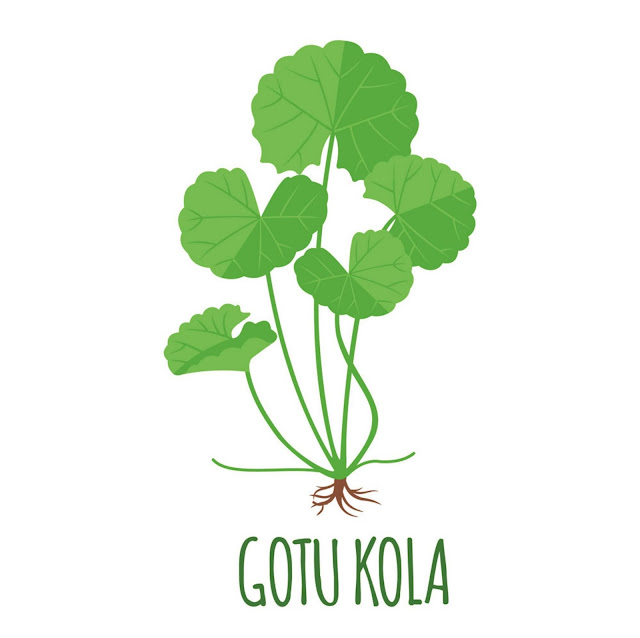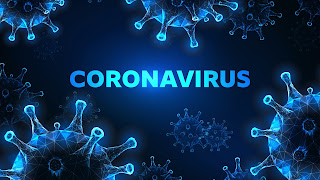Everything You Need to Know About Gotu Kola
Everything You Need to
Know About Gotu Kola
What’s Gotu Kola?
Pegged as the “herb of longevity,” gotu kola is a staple in traditional Chinese, Indonesian, and Ayurvedic medicine. Practitioners claim the medicinal plant has the power to boost brainpower, heal skin issues, and promote liver and kidney health — and some studies seem to agree.Keep reading to learn how gotu kola may help improve your overall health and well-being.
1. It may help boost cognitive function
A small 2016 study Trusted Source compared the effects of gotu kola extract and folic acid in boosting cognitive function after a stroke. This small study assessed the impact on three groups of participants — one taking 1,000 milligrams (mg) of gotu kola per day, one taking 750 mg of gotu kola per day, and one taking 3 mg of folic acid per day.Although gotu kola and folic acid were equally beneficial in improving overall cognition, gotu kola was more effective in improving memory domain.
A separate study Trusted Source looked at the cognitive enhancing effects of gotu kola water extract on mice. Although both young and old mice showed improvements in learning and memory using the Morris Water Maze, the effect was higher in the older mice.
How to use: Take 750 to 1,000 mg of gotu kola per day for up to 14 days at a time.
2. It may help treat Alzheimer’s disease
Gotu kola has the ability to enhance memory and nerve function, which gives it potential in treating Alzheimer’s disease. In fact, one 2012 study on mice found that gotu kola extract had a positive effect on behavioral abnormalities in mice with Alzheimer’s disease.The extract was also shown, in lab and animal studies, to have a modest effect on protecting brain cells from toxicity. This could also protect the cells from forming the plaque associated with Alzheimer’s.
Still, further research is needed to determine exactly how gotu kola could be used to treat Alzheimer’s. If you’re interested in adding this to your treatment plan, talk to your doctor before use.
How to use: Take 30 to 60 drops of liquid gotu kola extract 3 times per day. Dosages may vary between manufacturers, so always carefully follow the directions on the bottle.
3. It may help reduce anxiety and stress
Researchers in an animal study from 2016 Trusted Source found that gotu kola had an anti-anxiety effect on male mice that were sleep deprived for 72 hours. Sleep deprivation can cause anxiety, oxidative damage, and inflammation.Mice that were given gotu kola for five consecutive days before undergoing sleep deprivation experienced significantly less anxiety-like behavior. They also experienced improved locomotor activity and less oxidative damage.
A 2013 review Trusted Source of anti-anxiety herbal medicines also concluded that gotu kola has an acute anti-anxiety effect. However, more research is needed to confirm these findings.
How to use: Take 500 mg of gotu kola extract twice a day for up to 14 days at a time. You can take up to 2,000 mg per day in cases of extreme anxiety.
4. It may act as an antidepressant
Gotu kola’s positive effect on brain function may also make it an effective antidepressant.A review from 2016 Trusted Source supports these findings, in part due to a study on 33 people with generalized anxiety disorder. The participants were asked to take gotu kola in place of their antidepressant medication for 60 days. They self-reported decreased stress, anxiety, and depression.
Another study discussed in the review assessed the effect of gotu kola on rats induced with chronic depression. The herbal remedy had a positive effect on certain elements of behavioral depression, including body weight, body temperature, and heart rate.
How to use: Take 500 mg of gotu kola twice a day for up to 14 days at a time. You can take up to 2,000 mg per day during times of intensified depression.
5. It may improve circulation and reduce swelling
Research from 2001 Trusted Source found that gotu kola can reduce problems with fluid retention, ankle swelling, and circulation tied to taking flights that last longer than three hours.Participants who experienced mild-to-moderate superficial venous disease with varicose veins were asked to take gotu kola for two days before their flight, the day of their flight, and the day after their flight.
Researchers found that participants who took the supplement experienced significantly less fluid retention and ankle swelling than those who didn’t.
Older research Trusted Source has also shown that gotu kola can be useful in treating varicose veins. This may be because gotu kola has a positive metabolic effect on the connective tissue of the vascular wall.
How to use: Take 60 to 100 mg of gotu kola extract 3 times per day for a week, before and after any flights. You can also massage the affected area with a topical cream containing 1 percent gotu kola extract.
How to do a skin patch test: It’s important to do a patch test before using any topical medication. To do this, rub a dime-sized amount on to the inside of your forearm. If you don’t experience any irritation or inflammation within 24 hours, it should be safe to use elsewhere.
6. It may help ease insomnia
Given its perceived ability to treat anxiety, stress, and depression, gotu kola may also be used to treat the insomnia that sometimes accompanies these conditions. Some consider this herbal remedy to be a safe alternative to prescription medications used to treat insomnia and other sleep disorders.Although older research Trusted Source does suggest that gotu kola can help treat sleep disorders, additional studies are needed to confirm these findings.
How to use: Take 300 to 680 mg of gotu kola extract 3 times per day for up to 14 days at a time.
7. It may help reduce appearance of stretch marks
According to a 2013 review Trusted Source, gotu kola can reduce the appearance of stretch marks. It’s thought that the terpenoids found in gotu kola increase collagen production in the body. This may help prevent new stretch marks from forming, as well as help heal any existing marks.How to use: Apply a topical cream containing 1 percent gotu kola extract to the affected area several times per day.
How to do a skin patch test: It’s important to do a patch test before using any topical medication. To do this, rub a dime-sized amount on to the inside of your forearm. If you don’t experience any irritation or inflammation within 24 hours, it should be safe to use elsewhere.
8. It may promote wound healing and minimize scarring
Researchers in a 2015 study on rats found that wound dressing containing gotu kola had healing effects on multiple types of wounds. This includes clean cuts by sharp objects, irregular tears caused by blunt-force trauma, and infected tissue.Although promising, further research is needed to confirm these findings.
How to use: Apply an ointment containing 1 percent gotu kola extract to the affected area several times per day. If your wound is deep or otherwise severe, see your doctor before use.
How to do a skin patch test: It’s important to do a patch test before using any topical medication. To do this, rub a dime-sized amount on to the inside of your forearm. If you don’t experience any irritation or inflammation within 24 hours, it should be safe to use elsewhere.
9. It may help relieve joint pain
The anti-inflammatory properties of gotu kola may be useful in treating arthritis.In fact, one 2014 study Trusted Source on collagen-induced arthritis in rats found that oral administration of gotu kola reduced joint inflammation, cartilage erosion, and bone erosion. Its antioxidant effect also had a positive effect on the immune system.
How to use: Take 300 to 680 mg of gotu kola extract 3 times per day for up to 14 days at a time.
10. It may have a detox effect
Newer research is taking a look at gotu kola’s effect on liver and kidney toxicity.According to one 2017 animal study Trusted Source, gotu kola can be used to suppress the toxic side effects of the antibiotic isoniazid. Isoniazid is used to treat and prevent tuberculosis.
Rats were given 100 mg of gotu kola for 30 days before they were given the antibiotic. These rats experienced less toxicity overall. Rats that did experience toxicity in the liver and kidneys resumed to near-normal levels after being given gotu kola.
More research is needed to expand upon these findings.
How to use: Take 30 to 60 drops of liquid gotu kola extract 3 times per day for up to 14 days at a time. Dosages may vary between manufacturers, so always carefully follow the directions on the bottle.
Potential side effects and risks
Gotu kola is generally well tolerated. In some cases, it can cause headache, upset stomach, and dizziness. Starting with a low dose and gradually working up to a full dose can help reduce your risk of side effects.You should only take gotu kola for two to six weeks at a time. Be sure to take a two week break before resuming use.
When applied topically, gotu kola has the potential to cause skin irritation. You should always do a patch test before moving forward with a full application. Herbs aren’t monitored by the FDA and gotu kola has been found to have dangerous levels of heavy metals due to being grown in contaminated soil. Choose to buy products from reliable sources.
Don’t use gotu kola if you:
- are pregnant
- are breastfeeding
- have hepatitis or other liver disease
- have a scheduled surgery within the next two weeks
- are under 18 years of age
- have a history of skin cancer
- have liver disease
- have diabetes
- have high cholesterol
- are taking medications such as sedatives for sleep or anxiety
- are taking diuretics
The bottom line
Although gotu kola is generally considered safe to use, you should still check in with your doctor before use. This herbal remedy isn’t meant to replace any doctor-approved treatment plan, and, in some cases, it may lead to adverse side effects.With your doctor’s approval, work an oral or topical dose into your daily routine. You may be able to avoid mild side effects by starting with a small amount and gradually increasing the dosage over time.
If you begin experiencing any unusual or prolonged side effects, discontinue use and see your doctor.




Comments
Post a Comment